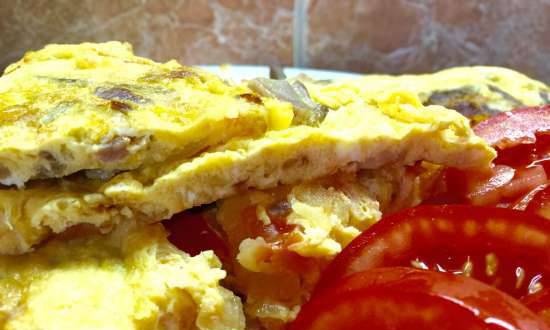Multigrain wheat bread with fermented baked milk and whey (oven)
I have a question for you, even two.
1. Are the grains in the finished bread felt strongly?
2. It seemed to me that you put the baking dish in the oven lower?
The fact is that I have bread in the same form with a very light crust on the sides and bottom, I was afraid to put it lower (electric oven).
But the cupcake under the same conditions turns out to be beautiful. I ask for your advice.
In the oven, a completely different bread is really obtained and delicious.
If the mass of cereals stands for 9-12 hours when soaking, the grains are not felt at all, but there is not much, I would not say that they interfere and are very sensitive to the bite.
I put the form on the second shelf from the bottom (electric Bosch oven), bake at 180 * C, bake at 165 * C.
I bake in a metallic black mold, the bread is soaked.
And in a glass form - the top and crust do not always turn out.
Success
This is the third time I've been rereading the topic about multi-grain bread. But I can't decide to start baking such bread ... The job is that I just can't get my bearings in time ... You need to eat cereals for 9-12 hours, but there is no time to bake in the morning ...
In this regard, I had a question: is it possible to somehow "steam" all this in order to speed up the process of softening cereals. I want the cereal to be in grains, not ground ...
And yet ... is it possible to replace buckwheat flakes with flax seeds (I don't like the smell of buckwheat in bread products, but I really respect flax seeds)? And the number of seeds should also be 40 grams?
Thank you in advance for your response...
Soak:
You can soak the cereal for a different amount of time, depending on how soft you want it to be. From a few hours to 48 hours. Then the cereal can be ground with a blender or in a meat grinder.
You can soak in the morning - in the evening, make the dough.
You can steam the cereal with boiling water, hot water and leave it to swell for several hours.
I used in one of the breads (I don't remember the recipe where) ready-made cereal porridge in meat broth !!! Very good bread turned out !!!
But for me, the best option is when the cereals are soaked in cold liquid!
Everything is learned in comparison, try the options!
Types of cereals, additives and their amount:
I use a variety of combinations of cereals, grains, flakes and grains (hereinafter "grains").
The proportions of grain can be different, and the combinations are also different 1-2-3-4, etc., how much you can afford to taste and how much is available.
At the same time, it is necessary to take into account what effect can occur from these grains, their influence on the finished result. For example, rice and rolled oats dry the dough, the finished bread is crumbly and dries quickly. Therefore, these grains need to be added to the dough less than others.
It is not necessary to make the proportions of grain 1x1x1, you can take your own proportions, depending on your preferences for certain grains and cereals. Although the dough with the addition of oatmeal turns out to be so plastic and grateful in processing !!!
Dough additives:
You can make various additions to the dough.
For example, yesterday I added 1 tsp of spicy bread mixture to the batch - a very good result!
You can add flax seeds and others to taste.
The use of lactic acid products when kneading cereals:
I like to use aged lactic acid foods for soaking, the dough is much better and the sour milk picks up grains and the dough well.
Read more about this here: Using aged cottage cheese in bread dough.
https://Mcooker-enn.tomathouse.com/index.php@option=com_smf&topic=45260.0
Amount of grains and flour:
The amount of cereals and flour is regulated only by your desire to get large or small bread in size and weight.
We start with the amount of cereals and the amount of liquid for soaking them.
If, for example, we take 4 types of 40 grams of cereals, then we add water (liquid) so much to cover the cereals with it completely and they could still absorb this liquid and remain very moist during the swelling time. I'm not talking about the amount of liquid, since it depends on the absorbency of the grain, but you just don't need to overdo it. The more water (liquid), the more flour you will have to add to the dough.
In my example (recipe), it took 400 ml of liquid (fermented baked milk + whey) to swell the cereals. Cereals take more liquid than just fine flour!
Flour: the amount of flour depends on the moisture content of the grain mass (soaked). We put the wet mass in a bucket, add another liquid (for example, liquid honey, butter) and then start pouring flour as much as the bun requires. For example, in my recipe, I immediately add 300 grams of flour to a bucket, and then another 4-5 tbsp. l flour during the first batch of dough.
We work according to the "flour in water" principle.
I gave you an example of working with cereals. You will take your amount of cereals, and of course, add your amount of liquid and flour.
As an example, I suggest you look at my other bread recipe based on the same principle of dough preparation:
Wheat-rye bread made from dispersed grain and cereals from Admin.
https://Mcooker-enn.tomathouse.com/index.php@option=com_smf&topic=8391.0
Good luck and write letters!
And here I am with the report. The bread turned out to be soft, tasty, not free-flowing, with a light taste and aroma of buckwheat, slightly wetter than usual.
I didn't have barley groats, but I'm just sw. the share of others, and the total weight took 160g. Next time I'll try to make it with homemade yogurt.
Thanks for the recipe!
Today with a report. I baked it! True, I did not have time to photograph in the context of the bread. I really liked the bread! True, on the second day its taste was no longer so expressive (why? Did I do something wrong?)
But here's the thing that annoys me - my family is not at all impressed by my experiments. Serve them only a loaf, they ask for ordinary white bread and rye ...And my soul asks for experiments !!!! Only a friend evaluates my bread ...
Here is my multigrain bread
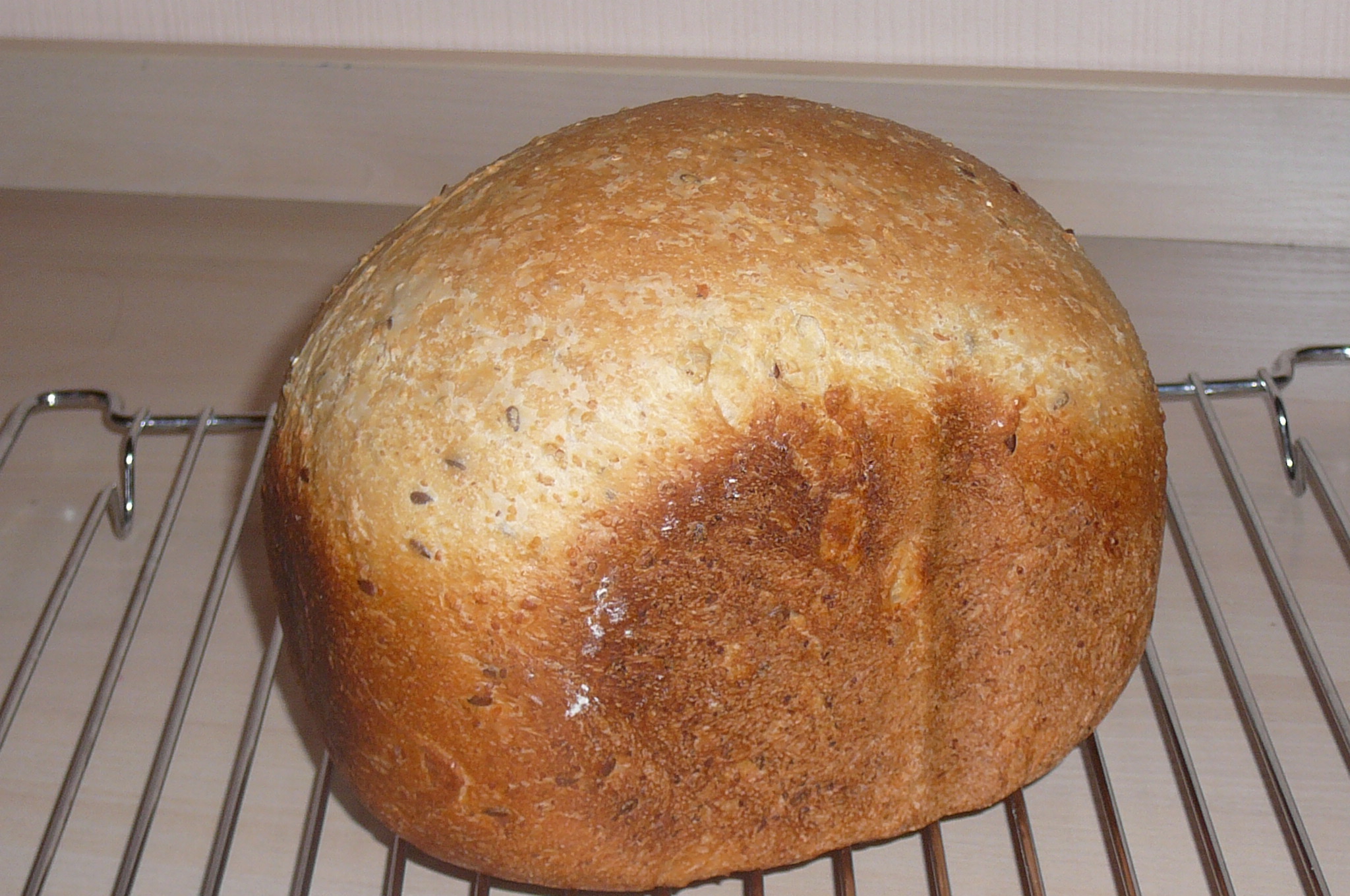
So at my house, everyone does not want to walk in formation, too, I bake at the request of the working masses - who and what
Bread is also a matter of taste! The main thing is that there is a desire to bake and experiment - that's what you value
If the taste of the bread is not quite right - make your own additives to taste
Thanks for the kind words
Here is my creation
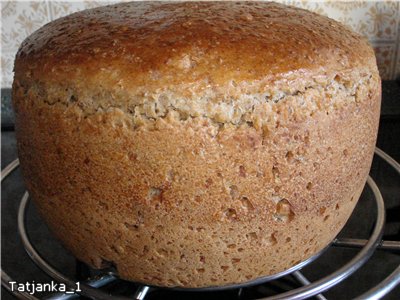
Raisins * ka , one tablespoon of buckwheat will not make the weather
Not for taste, not for color. The color may be a little grayish, but the taste .... I don't like it.
For example, I like the taste of buckwheat, especially in combination with rye flour and buckwheat honey - a pronounced buckwheat taste is obtained.
Try it yourself
Today I made 200g for sourdough (rye + buckwheat) and 1x1x1 wheat and barley grains, and ground buckwheat.
Shiver put 1/4 tsp.
It rose perfectly, and the taste is beyond words.
The crust is thin, crumbling, well, you can see for yourself.
HEALTH TO YOU
Tatyanka - what a great bread
Very happy about you
Bake and eat for health
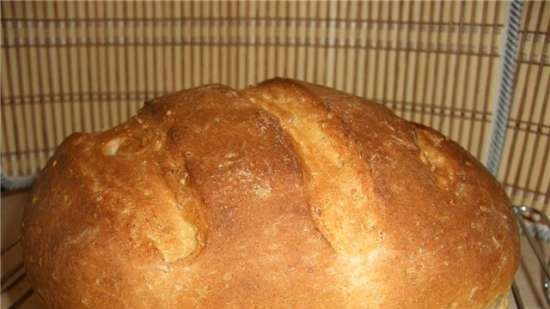
Wheat groats - 30 grams
Barley groats - 30 grams
Flakes "4 cereals" - 30 grams
Buckwheat flakes - 30 grams
Total groats are different 120 grams.
Old kefir (yogurt) - to pour cereals and flakes
Vegetable oil - 1 tbsp. l
sugar - 1 tbsp. l
Salt - 1.5 tsp
Yeast - 1.5 tsp
Wheat flour - 300 + if required
Kneading in x \ n, proofing in a bowl, baking in the oven on the bottom.
The dough is very soft and grateful to work with, it is well cut and shaped. Proofing of the dough is fast too.
Bon appetit, everyone!
No words !!! Emotions overwhelm from each bread you bake !!! The crumb is amazing !!!
Admin
No words !!! Emotions overwhelm from each bread you bake !!! The crumb is amazing !!!
Crochet , thanks for the compliment: flowers:
In addition to crumb, a decent bread taste is obtained
What an interesting bread !!!!!! And useful on top of everything else! I will definitely bake. I will report!
Admin
What an interesting bread !!!!!! And useful on top of everything else! I will definitely bake. I will report!
I make such bread often, a very simple and affordable version of bread And at home I keep stocks of cereals and cereals of various options
Taste - neutral for bread, but tasty keeps well.
Take your multi-grain bread with fermented baked milk and whey "reverse kneading":
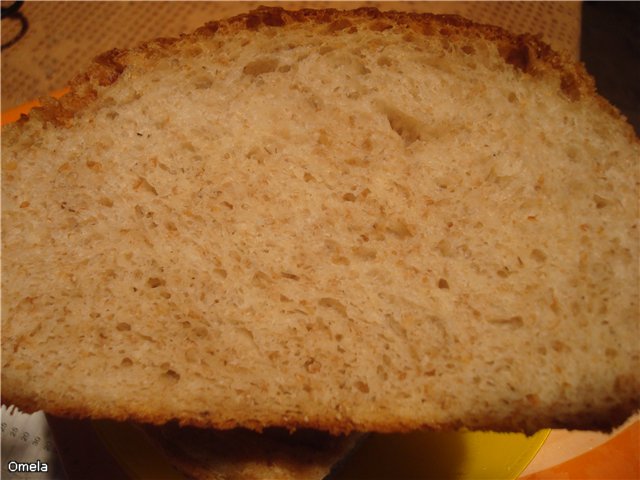
I made a small bun for testing. The bread turned out to be very interesting and unusual in taste. When kneading, it seemed to me that I went too far with flour, added water (apparently not enough). The crumb is very soft. I will bake with milk again! thanks for the recipe!
What a round piece it turned out. This option is one of my favorites, it is tasty, healthy, the dough is pleasant!
Thank you - pleased
I even kissed some bread - it turned out so fragrant
Bake and eat for health
baked bread in the form of buns
and in the context
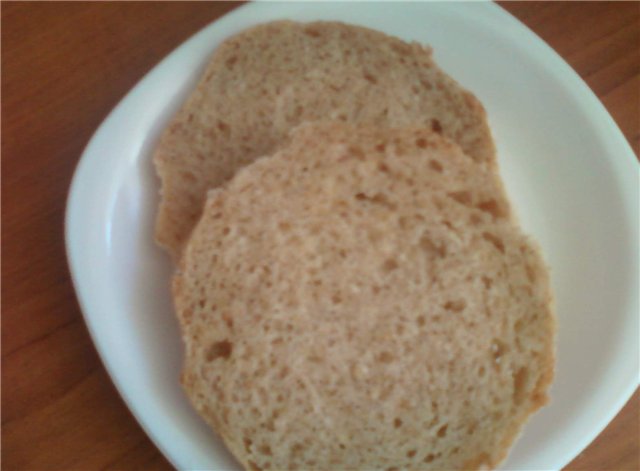
I wish you new recipes, new ideas for our delight!
Decent bread, we also love this bread and often bake multi-grain bread!
Admin, thank you so much for such a thorough, lovingly executed MK. You read and feel the warm, sincere attitude of the author.
Ruzhanna, Thanks for the kind words
It's always nice to hear your feedback, and especially when my MKs benefit you and everything works out
I bake this bread regularly, it is generally one of my favorites, and the process of pre-soaking is not scary. It's worth it.
Recently, I have partially replaced wheat flour with rye, it turns out even tastier.
How nice to hear that you liked the bread, eat it for health
Try also this version of bread with flakes - it also turned out very tasty Wheat-rye bread on a mixture of flakes
https://Mcooker-enn.tomathouse.com/index.php@option=com_smf&topic=100340.new#new Hope you like it
I slightly changed the original recipe, I had mushroom kefir from milk, but since it was not a complete norm, I added water. And also changed the types of cereals and flour. The recipe is a treasure trove for imagination. Soaked the groats for a day
I put it in the bread maker in the sequence shown below. I used the following modes: for the dough, the "pizza" mode, 1 batch, left for 1.5-2 hours for proofing, and baked in the "baking" mode for 1 hour 10 minutes. It was important for me that the bread was baked at a certain time, and therefore I had to play with modes.
Fast-acting yeast Saf-Moment (6.0 grams)
Wheat flour (260.0 grams)
Peeled rye flour (140.0 grams)
Wheat groats (40.0 grams)
Barley groats (40.0 grams)
Corn groats (40.0 grams)
Buckwheat groats (40.0 grams)
Water (80.0 grams)
Milk 2.5% (320.0 grams)
Salt (10.0 grams)
Sunflower oil (24.0 grams)
Natural honey (25.0 grams)
for those who are interested in the calorie content of the product
Yield 862 grams
QC and BZHU of finished bread
KK267.5 B8 Zh4.6 U48.3
but bread


Thanks for using the recipe
The bread turned out wonderful, even and beautiful
I don’t put corn grits in the dough, it doesn’t soak at all and remains tough and grains all the time, which I don’t quite like in the finished bread. Therefore, it is better to pre-boil this cereal (porridge).
The recipe really invites you to fantasize with what's on hand.
It turned out that the fermented baked milk in the refrigerator not only grew old, but also died, so it had to be poured out, I took homemade yogurt, old whey, fresh yeast (rubbed with 1 tsp of sugar), the rest according to the recipe.
The dough is really very pleasant to work with, in appearance, it seems that it will be difficult to work with it, but when you take it in your hands, it is so cool, absolutely not sticky, nothing tears or spreads anywhere, keeps its shape well. It even seemed to me that it could be done as a sub and everything would work out.
The bread is very soft and beautiful and grew very well (with difficulty keeping track). Haven't tried it yet, but the scent is amazing! From this portion, we got two bread, one standard brick and one small one.
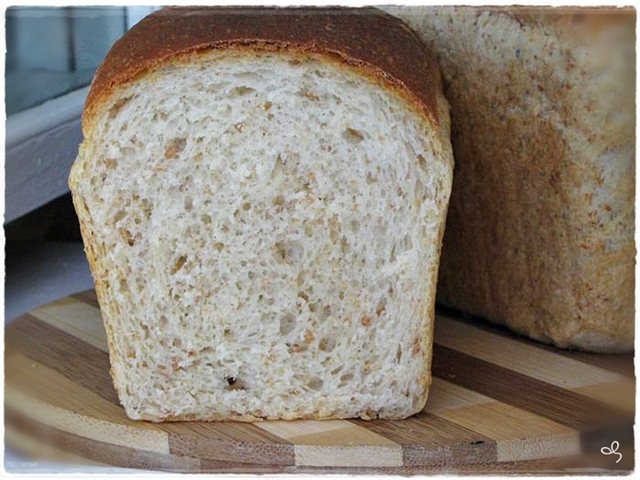
Please, tell me ... you put Pizza on the program, you started kneading (written 10-18 minutes) ... then there is a rise (7-15 minutes) .... How do you proofing by 1.5 -2 hours? Do you adjust the timer yourself or what?
I used the following modes: for the dough, the "pizza" mode, 1 batch, left for 1.5-2 hours for proofing, and baked in the "baking" mode for 1 hour 10 minutes.
Please tell me how to do it right.
Ira, it's better to do it yourself, it's a natural serum.
Or you can dilute the yogurt with water so that the liquid mass turns out, it is also good
You can whiten the water with yogurt, kefir.
Or make cottage cheese from kefir, so the liquid will be whey.
for those who are interested in the calorie content of the productTo me, I'm interested, it's just very important! My daughter recently had type 1 diabetes. The pancreas died after a long illness, against the background of stress (grade 1). So now we are counting carbohydrates. ... so a huge - huge thank you - thank you!
Yield 862 grams
QC and BZHU of finished bread
KK267.5 B8 Zh4.6 U48.3
Can the cereal be soaked later than the cereal? After all, cereals swell for a long time, and flakes much faster ...
Flakes "5 cereals"
(composition - oatmeal, barley, wheat, rye, buckwheat) 40 g
Buckwheat flakes 40 g
Total different groats 160 g
That is, it contains only flakes. Therefore, you can soak them together.
Can be replaced with other flakes.
I like buckwheat more, so I use it more often. Buckwheat has a very pronounced taste and aroma.
Nastya, I answered correctly.
In the recipe I read:
Since the croup is tough, I soaked the cereal, and with it the cereal fermented baked milk with curd whey in full according to the recipe.
After the night - the cereal was soaked for 9 hours. You see how much liquid the cereal and liquid have absorbed. On the bite, the croup has become soft, you can put it in the dough in this form.
That is, cereals and flakes are in one bottle together, from the very beginning
I specially stocked up on whey by boiling cottage cheese. I didn’t see much more rise than on the water, but the taste struck !!! I waited a little sour, as in the case when I baked on fresh fermented baked milk and water, but for some reason turned out to be sweetish (baked on whey and old fermented baked milk). Maybe it's milk sugar in whey that plays like that? OOOVery whey enriches the taste of the bread! CLASS! SUPER! DELIGHT! I'm talking about taste ...
The bread is baked well. Very soft, thin crust, crispy.
The only thing that really torments me is the fact that I had to add sooooo much flour. According to the recipe, a little more than 300 grams, I had to add about 400! Could the rains be so affected? They are with us for the second week ... Why did you add so much flour? At first there was a comma, and then I did not want to detach from the walls, it was liii sticky ...
And yet, I have a question, what should be a bun at proofing? I kept it well. Should it be so? Or should the bun "settle" to the bottom of the bucket? Well, to make it clear, I missed with flour or not?
And the roof is a separate song ... It is all straight with mounds and patterned, like frosty glass ... Why? What does this mean? And what is this drawing on the roof?
The flour-liquid balance is affected by:
- the quality and type of flour (in / grade, CP, and so on), which take liquid in different ways.
- flour moisture at the time of kneading the dough
- the density of the liquid (water, kefir, cottage cheese ...)
If you are not sure, it is better to always follow the principle of "flour into water", there will never be a mistake, flour will take as much liquid as it needs currently kneading dough, for a quality kolobok.
Yeast in this situation does not affect the density of the dough in any way - only the rise of the dough.
Optimally, the dough should be increased 2-2.5 times, and no more! If the rise is higher and stands for so long, the dough may be overstated, it will fall and it will be problematic to lift it. The bun should not settle, it has already stopped.
My grandmother always taught me: on young kefir (yogurt), the pancakes will be low and dull dough, and the pancakes will be sour. In the dough you need to take "peroxidized" kefir, then the baking will be airy and without sour taste.
That is why I recommend using only peroxidized kefir for baking and brewing cereals in the subject. Why am I waiting for the kefir to bubble, and the whey will be separated already - the very thing for baking and pancakes and bread
And you, Admin, to the reward !!!
Nastya, Thanks for the kind words
All my recipes are checked for the correctness of ingredients, verified and described so that dough and bread always come out











